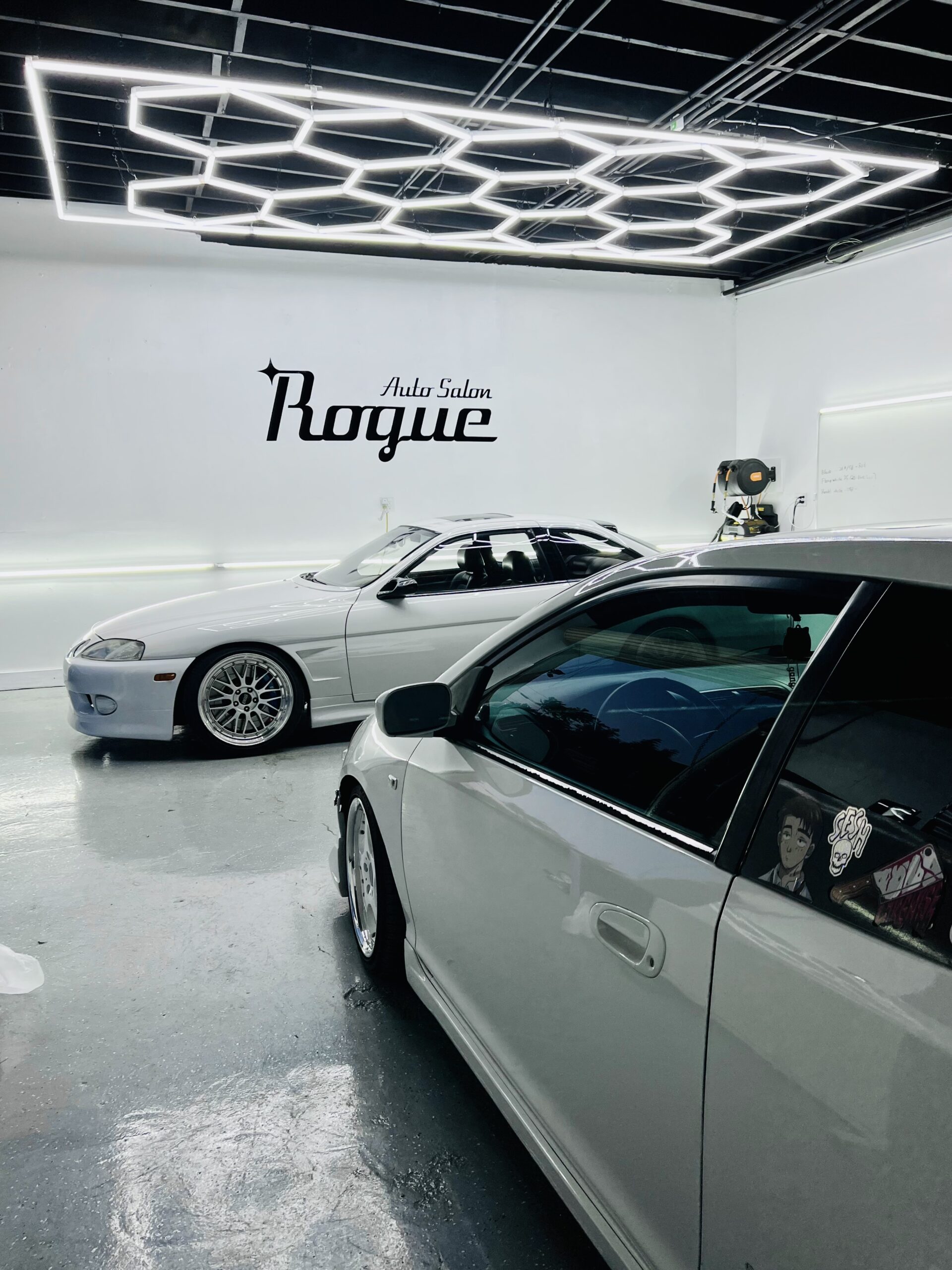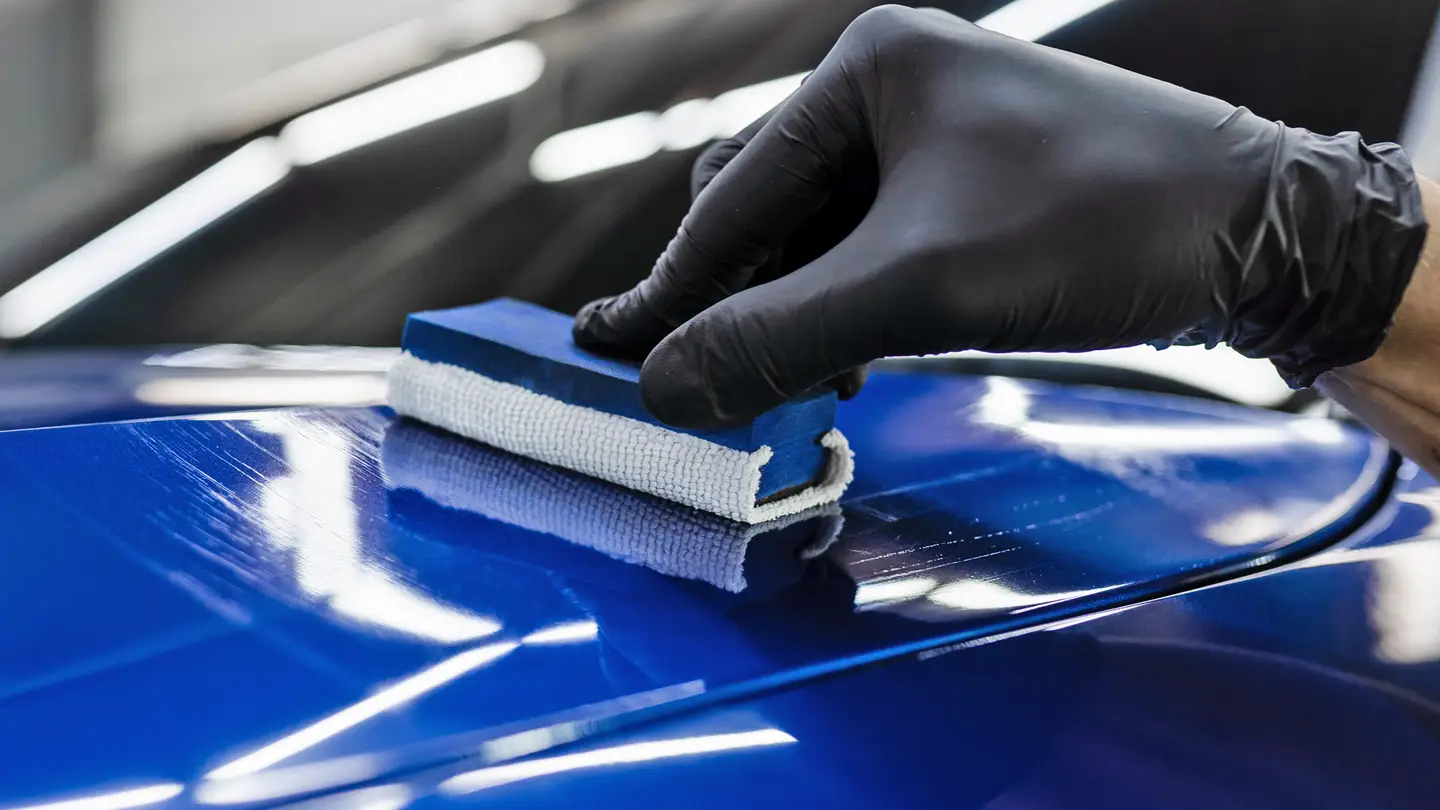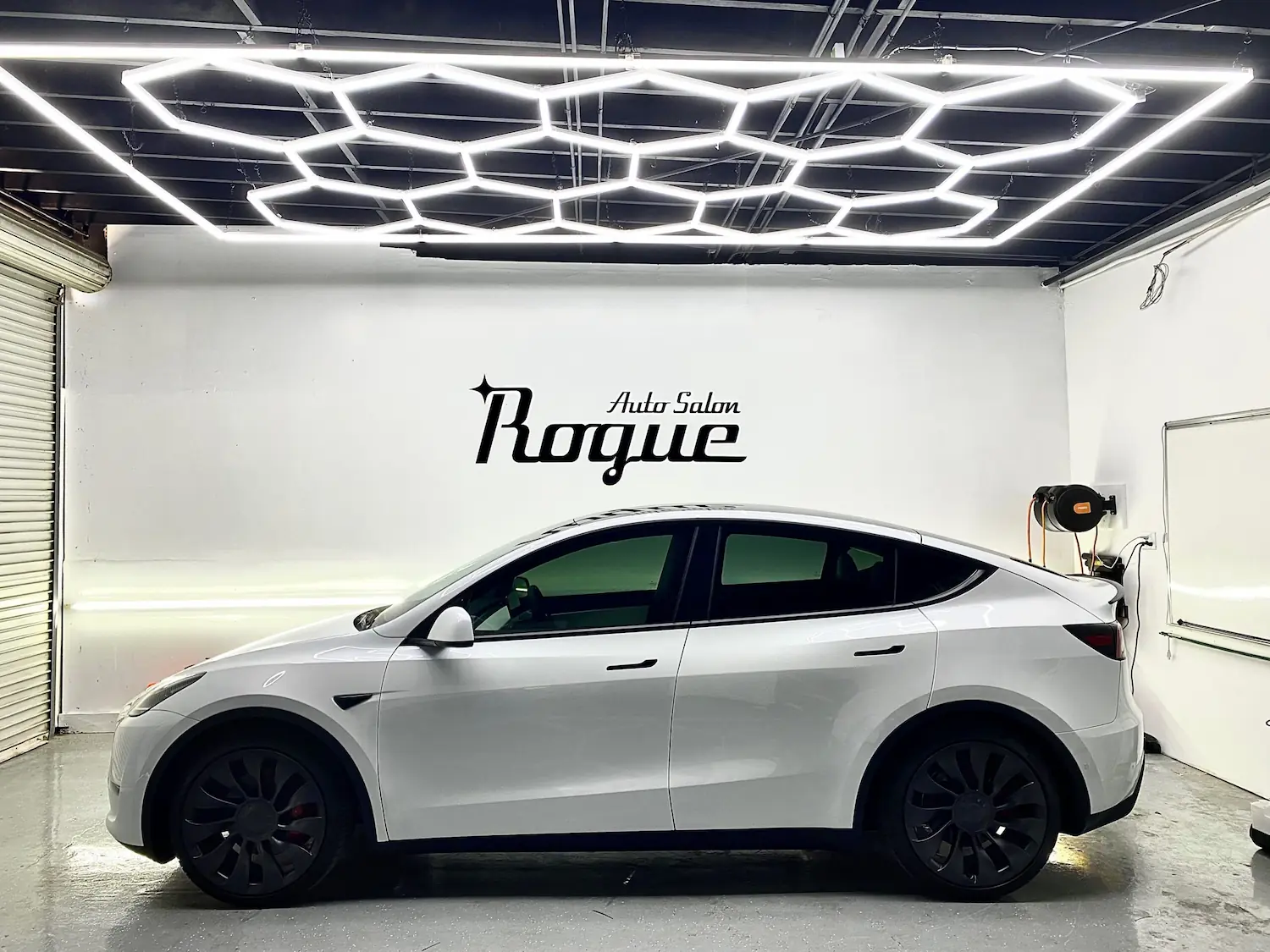Autocare
The Science Behind Paint Protection Films: How They Shield Your Vehicle
Understanding the Technology Behind Paint Protection Films
Your car’s exterior faces daily exposure to road debris, harsh weather, and UV rays, making paint protection film an essential solution for preserving its pristine look. This advanced, transparent layer shields your vehicle from scratches, chips, and fading, extending the life of your car’s paint.
But how does it work?
In this article, we explore the science behind automotive paint protection film, breaking down its composition, benefits, and installation process. Whether you’re considering auto paint protection film for your vehicle or simply curious about how paint protection film for cars works, this guide will provide all the answers.

What is Paint Protection Film?
Paint protection film (PPF) is an advanced solution designed to protect your vehicle’s exterior from environmental damage, rock chips, and everyday wear and tear. Made from a high-quality thermoplastic urethane, PPF provides a strong yet flexible barrier that shields your car’s paint while maintaining a seamless, nearly invisible appearance.
The automotive paint protection film is widely used by car enthusiasts and professionals to preserve the factory finish of vehicles.
Whether you own a brand-new luxury car or are a daily driver, applying an auto paint protection film is an effective way to keep your vehicle looking pristine for years.
The Composition of Paint Protection Film
Understanding the structure of paint protection film for cars is crucial to appreciating its effectiveness. PPF typically consists of three core layers:
- Self-Healing Top Coat – This top layer is responsible for the film’s self-repairing properties. When exposed to heat, minor scratches, and swirl marks fade away, restoring the smooth, glossy finish.
- Thermoplastic Polyurethane (TPU) Layer – This is the thickest and most protective layer. TPU is flexible and impact-resistant, allowing it to absorb shocks from debris, pebbles, and minor abrasions.
- Adhesive Layer – The bottom layer features a high-quality adhesive that ensures a strong bond between the film and the vehicle’s surface while allowing for removal without damaging the paint.
These layers work together to provide superior protection while maintaining clarity and longevity.
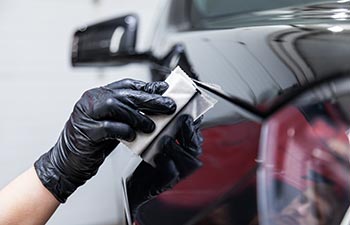
How Does Paint Protection Film Shield Your Vehicle?
1. Impact and Scratch Resistance
One of the primary functions of an automotive paint protection film is to absorb and disperse the force from minor impacts. Small rocks, gravel, and road debris can cause chips and scratches, but PPF acts as a sacrificial barrier, taking the damage instead of your vehicle’s paint.
2. Self-Healing Technology
High-quality car paint protection film features self-healing properties that allow minor scratches and swirl marks to disappear over time when exposed to heat. Whether from the sun, a heat gun, or warm water, the TPU layer reforms itself, maintaining the film’s flawless appearance.
3. UV and Oxidation Protection
Exposure to UV rays can cause a vehicle’s paint to fade and oxidize over time. Auto paint protection film includes UV inhibitors that prevent sunlight from degrading the paint, ensuring your car retains its original color and shine for longer.
4. Hydrophobic and Stain Resistance
Paint protection film for cars often comes with hydrophobic properties, making it resistant to water, dirt, and contaminants. This ensures that water beads off the surface, reducing the chances of water spots and making cleaning easier. Additionally, PPF helps protect against stains from bird droppings, tree sap, and insect splatters.
5. Chemical and Corrosion Protection
PPF acts as a shield against chemical contaminants such as road salts, fuel spills, and harsh cleaning agents. This added layer prevents chemical reactions that can deteriorate your car’s paint over time.
These are just the gist of the benefits paint protection film provides.
Types of Paint Protection Film
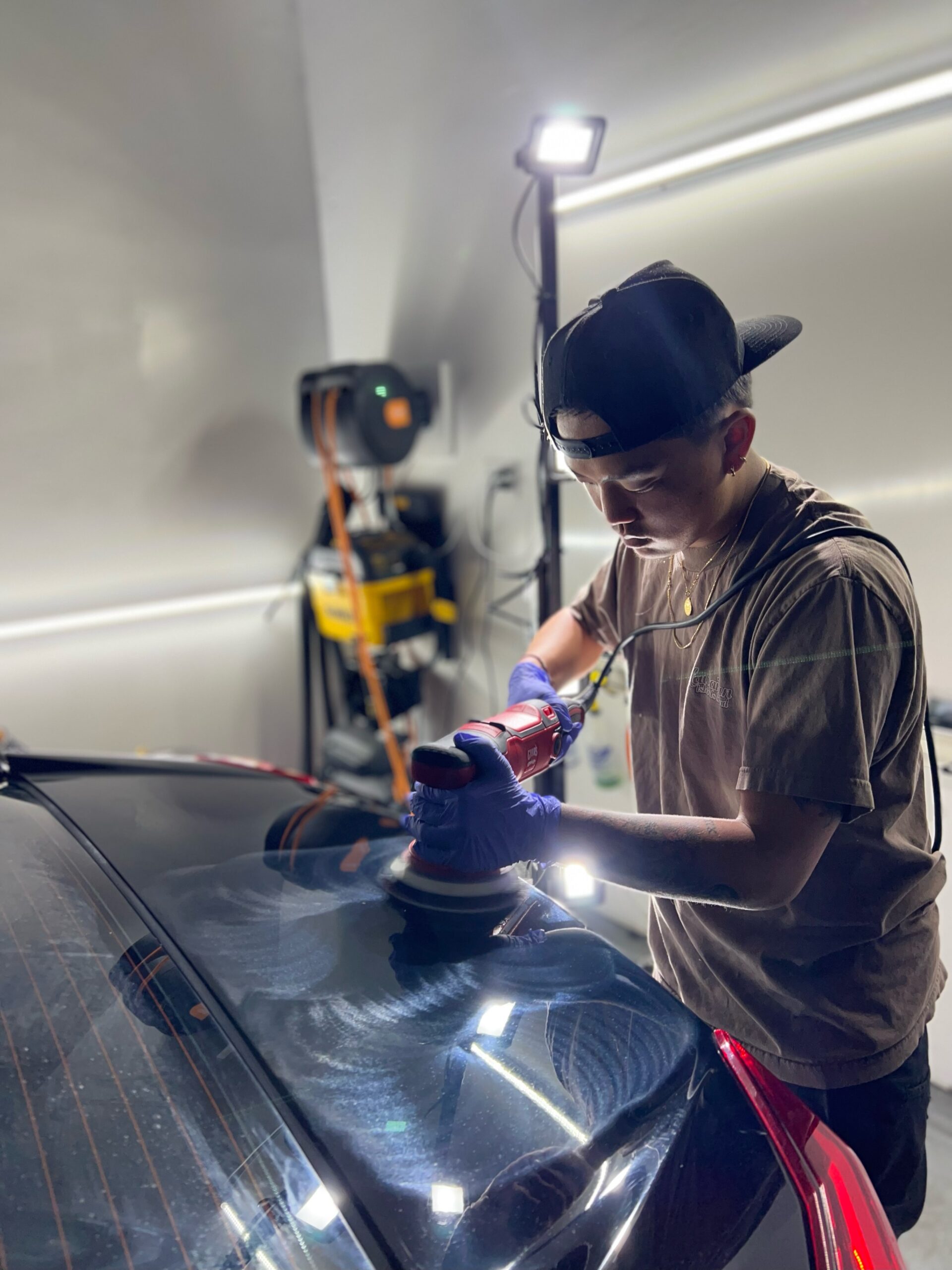
Not all PPFs are created equal. There are several types available, each offering varying levels of protection:
- Basic PVC-Based PPF
This is the most affordable paint protection film option, offering only minimal protection. While it can provide a basic barrier against light scratches and contaminants, it tends to yellow, crack, and degrade over time due to exposure to UV rays and harsh weather conditions. - TPH (Thermoplastic Hybrid) PPF
A step up from PVC, TPH-based automotive paint protection film is more flexible and offers better protection against scratches and UV rays. It is a cost-effective alternative to premium TPU films, making it a good balance between affordability and durability. - TPU-Based PPF (Premium Choice)
Thermoplastic polyurethane (TPU) PPF is the highest-quality option, offering exceptional durability, flexibility, and self-healing properties. It effectively resists impacts, UV damage, and chemical stains, ensuring long-lasting protection without yellowing. TPU-based auto paint protection film is the best choice for those seeking superior, long-term defense for their vehicle’s paint.
The Importance of Professional Installation
While DIY kits are available, professional installation of a car paint protection film is highly recommended for the best results. Professionals have the expertise, precision tools, and controlled environments necessary to ensure a flawless application. Getting professional help also ensures you are getting your money’s worth.
Here are a few reasons to employ professionals:
Precision Cutting and Fit: Experts use advanced pre-cut templates or custom-fit techniques to ensure the paint protection film perfectly adheres to every curve and contour of your vehicle, providing seamless coverage.
Bubble-Free Application: Improper application can lead to air bubbles and misalignment, reducing the film’s effectiveness. Professionals ensure a smooth, even installation for optimal protection.
Warranty and Durability: Many professional installations include warranties, guaranteeing long-term durability and performance, giving you peace of mind that your car paint protection film will last for years.
Contact Rogue Auto Salon to book your professional paint protection film today!
Comparing PPF to Ceramic Coating
Many car owners wonder whether to choose paint protection film or ceramic coating. Here’s how they compare:
Feature | Paint protection film | Ceramic coating |
Impact protection | yes | no |
Self-healing properties | yes | no |
UV and oxidation protection | yes | yes |
Hydrophobic properties | yes | yes |
Scratch resistance | high | Moderate |
Longevity | 5-10 years | 2-5 years |
For maximum protection, many car owners choose to apply both PPF and ceramic coating. The PPF provides physical protection, while the ceramic coating enhances shine and hydrophobicity.
Cost of Paint Protection Film
The price of automotive paint protection film varies based on factors such as the type of film, vehicle size, and installation complexity. Here’s a general cost breakdown:
- Partial PPF (hood, bumpers, side mirrors): $500 – $1,500
- Full Front PPF (entire hood, bumper, fenders, headlights, mirrors): $1,500 – $3,000
- Full Car PPF: $4,000 – $8,000+
While the upfront cost may seem high, the long-term benefits of protecting your vehicle’s resale value make it a worthwhile investment.

Long-Term Benefits of Paint Protection Film
- Preserves Resale Value: A well-protected exterior keeps your car in top condition, ensuring a higher resale price by preventing paint damage and fading.
- Reduces Maintenance Costs: With automotive paint protection film, you’ll spend less on repainting and repairing scratches, saving money in the long run.
- Keeps Your Car Looking New: Shields against road debris, UV rays, and environmental contaminants, maintaining a fresh, showroom-like appearance.
- Enhances the Driving Experience: Protects against minor impacts and stains, giving you peace of mind and allowing you to enjoy your ride worry-free.
Final Thoughts: Is Paint Protection Film Worth It?
If you want to maintain your vehicle’s showroom-like finish and protect it from the elements, investing in a high-quality car paint protection film is a smart decision. With advanced self-healing technology, UV resistance, and impact protection, PPF ensures your car stays in top condition for years.
To ensure a flawless application, always opt for professional installation. Whether you’re driving a luxury sports car or a daily commuter, auto paint protection film offers a reliable and long-term solution for safeguarding your vehicle’s appearance.
If you’re ready to invest in the best automotive paint protection film, consult Rogue Auto Salon. Keep your car looking as good as new and enjoy worry-free driving with industry-leading paint protection solutions!

